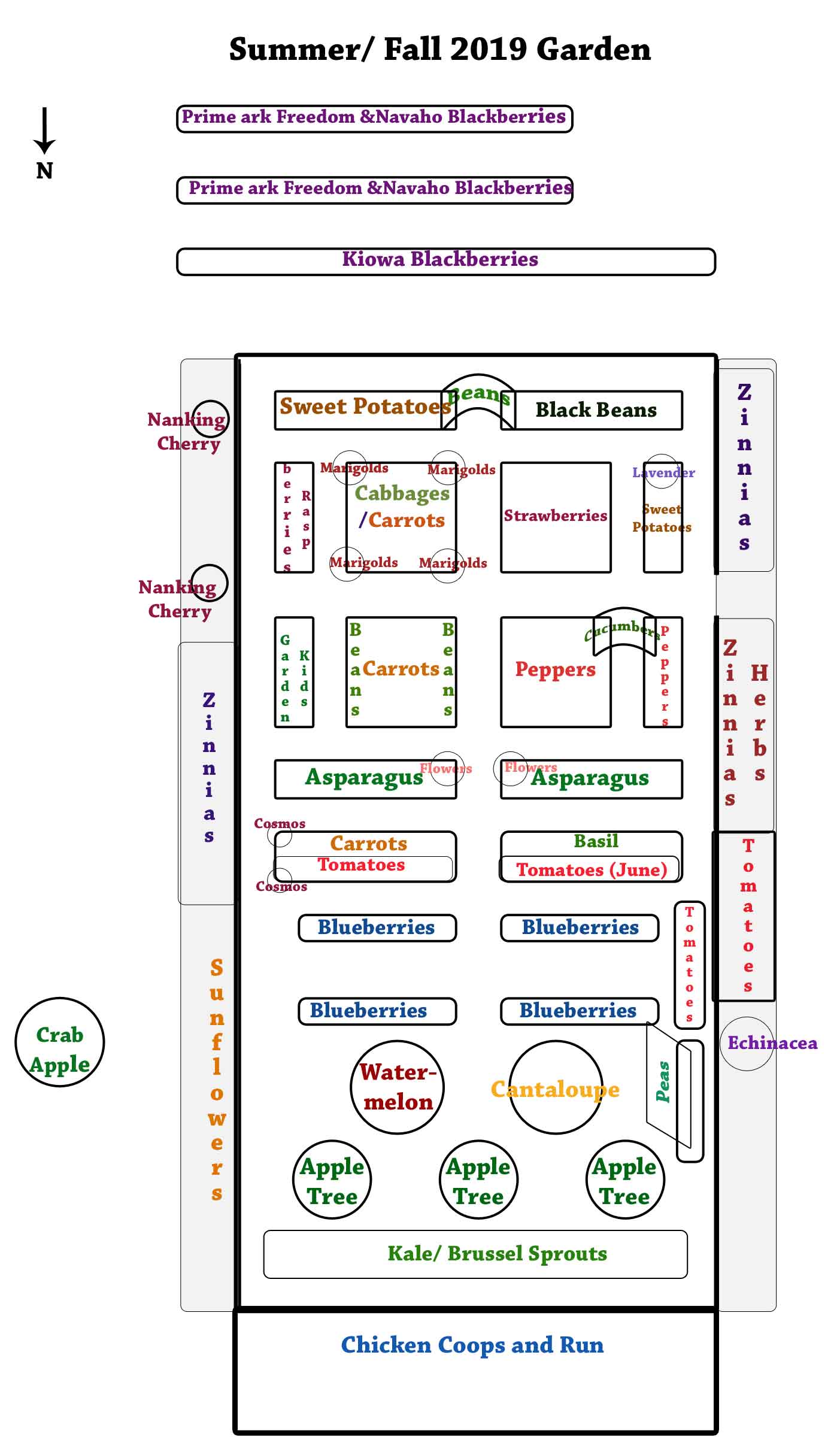Planting a fall garden seems easy enough. And yet there are always a few details and kinks to work out when it comes to planning for any garden.
A fall garden is ready to harvest in fall which means you are planting and sowing seeds in the summer. Do you want to know the secret to success? Psst… the secret is do not miss the planting window.
In years past, I’ve been so busy with harvesting and preserving my summer crops that I miss the window for certain fall crops. This year, I’m already doing better (though not perfect haha!). I made a fall planning chart to help me to plant on time. I’m sharing my fall planner below as well as some tips in hopes that it helps you too!
1. Plan the Location of Crops
With a plan in place, planting for a fall harvest is simple. The first part of the plan begins back in winter as you plan your garden. You have spring, summer, fall, and possibly winter crops and will need to allocate space for each. You can dedicate the space to those crops for the entire season or you can succession plant and interplant crops. Either way works, just make sure you have the space when the time comes to plant.
I do my garden plan on the computer now but for years I just did it on a sketch pad.

 I have a planned location for each of my fall crops. My garden is a small space so as a spring or summer crop comes out, I plant a fall one.
I have a planned location for each of my fall crops. My garden is a small space so as a spring or summer crop comes out, I plant a fall one.
Above is what my garden plan looks like as it transitions between seasons. You can play the Find the Differences Game and see what crops have changed 🙂
2. Make a list of what varieties you want to plant in Fall and Winter
Once you have the general plan of crops in place, it’s time to make a line list of exactly what varieties you want to harvest in the fall. At this point, I take out all my seed packets and go through every single one.

It really helps to make a list of every single variety you want to plant in the fall, that way you don’t forget anything!
I made a planner that will clearly and easily help you to make a line list of each variety and exactly when you would need to plant in fall based on when your average last frost for your area is.

To download this Fall Garden Planner and get the directions on how to use it simply enter your email below and it will give you access to the planner as well as all my other resources.
Thank you!
Please check your email to confirm and get the resources.Sometimes it ends up in the spam box so check there if you don’t see it!
It does take a little time and a little research to fill out the planner if your seed packet doesn’t have the details on it. But the good news is that if you’re growing the same variety again next year, you already have the information all filled out! You only need to fill it out once unless you add more crops.
You can also make notes on your planner. What your actual first harvest date was, how many weeks you harvested, and then make adjustments to improve your success rates.
3. Add the sowing and planting dates from your chart to your calendar.
Now that you have your list of exact planting dates ready, it’s time to add the planting dates to your calendar. This is totally personal preference as to what calendaring method works for you. I like to do a monthly garden calendar on paper (yes I’m old school and don’t do the digital thing). Each Monday, I take my paper monthly calendar and will write specific tasks on a weekly calendar (see photo below). My weekly calendar is a chalkboard in my kitchen so it’s visible all the time and I remember to actually do it.
 My weekly garden planner.
My weekly garden planner.
4. Plant on time.
Here’s the kicker, plant on time and don’t miss your week to plant. If I know I’m going to have a busy week, I will plant the week earlier. Make or buy your indoor seed starting soil, have your seeds, containers, and garden beds ready. When the garden plan, the Fall Garden Planner chart, and the calendar are all in place, planting should be simple (well theoretically, haha!).
For fall and winter planting, the plants need to grow to maturity or almost maturity before it gets cold. The daylight hours will get shorter and they won’t grow much after that. That is why it’s so important to start on time. I learned that lesson more than once. It gets crazy because usually I’m in them middle of the busiest harvest time of summer and it’s time to plant the fall crops.
If you find your already late on some things this year, no worries. Plant what you can and don’t worry about the rest. Next year is another chance for experimentation and success!

